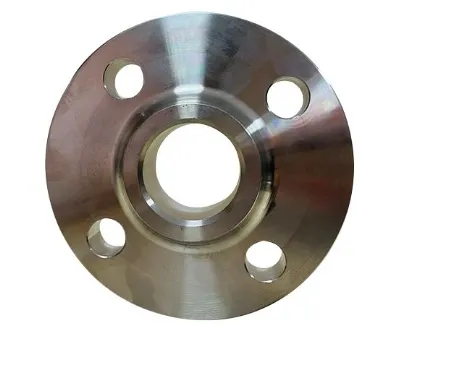-
Cangzhou Yulong Steel Co., Ltd.
-
Phone:
+86 13303177267 -
Email:
admin@ylsteelfittings.com
- English
- Arabic
- Italian
- Spanish
- Portuguese
- German
- kazakh
- Persian
- Greek
- French
- Russian
- Polish
- Thai
- Indonesian
- Vietnamese
- Zulu
- Korean
- Uzbek
- Hindi
- Serbian
- Malay
- Ukrainian
- Gujarati
- Haitian Creole
- hausa
- hawaiian
- Hebrew
- Miao
- Hungarian
- Icelandic
- igbo
- irish
- Japanese
- Javanese
- Kannada
- Khmer
- Rwandese
- Afrikaans
- Albanian
- Amharic
- Armenian
- Azerbaijani
- Basque
- Belarusian
- Bengali
- Bosnian
- Bulgarian
- Catalan
- Cebuano
- China
- China (Taiwan)
- Corsican
- Croatian
- Czech
- Danish
- Esperanto
- Estonian
- Finnish
- Frisian
- Galician
- Georgian
- Kurdish
- Kyrgyz
- Lao
- Latin
- Latvian
- Lithuanian
- Luxembourgish
- Macedonian
- Malgashi
- Malayalam
- Maltese
- Maori
- Marathi
- Mongolian
- Myanmar
- Nepali
- Norwegian
- Norwegian
- Occitan
- Pashto
- Dutch
- Punjabi
- Romanian
- Samoan
- Scottish Gaelic
- Sesotho
- Shona
- Sindhi
- Sinhala
- Slovak
- Slovenian
- Somali
- Sundanese
- Swahili
- Swedish
- Tagalog
- Tajik
- Tamil
- Tatar
- Telugu
- Turkish
- Turkmen
- Urdu
- Uighur
- Welsh
- Bantu
- Yiddish
- Yoruba

Dec . 05, 2024 15:09 Back to list
api 5l x42 pipe specification
API 5L X42 Pipe Specification An Overview
API 5L is a standard specification developed by the American Petroleum Institute (API) for the line pipe industry. It primarily covers the manufacturing process and requirements for line pipes intended for the transportation of oil, gas, and water in various applications. Among the various grades specified by the API, the X42 grade is widely recognized and utilized in many projects due to its favorable properties and cost-effectiveness.
Understanding API 5L X42
API 5L X42 pipes are commonly used in the transportation of oil and natural gas. The X in X42 stands for the yield strength of the pipe, which is 42,000 psi (290 MPa). This high yield strength contributes to the pipe's ability to withstand considerable stress, making it suitable for high-pressure applications. The X42 grade is often used in both onshore and offshore pipelines, providing reliability in both settings.
Chemical Composition
The chemical composition of API 5L X42 pipes is crucial for ensuring their mechanical properties. The standard specifies limits on various elements such as carbon (C), manganese (Mn), phosphorus (P), sulfur (S), and silicon (Si). Typically, the carbon content is limited to a maximum of 0.24%, while manganese content can range from 0.60% to 1.20%. The presence of these elements, when balanced properly, ensures that the pipe has the required tensile strength and toughness, which are critical for line pipe performance.
Mechanical Properties
In addition to its chemical composition, API 5L X42 pipes must meet specific mechanical property requirements. These include yield strength, tensile strength, and elongation. For X42 pipes, the minimum yield strength is 42,000 psi, the minimum tensile strength is generally around 60,000 psi, and elongation requirements vary based on the pipe diameter and wall thickness. These mechanical properties ensure that the pipes can endure the physical stresses encountered during their service life.
api 5l x42 pipe specification

Manufacturing Process
The manufacturing process of API 5L X42 pipes involves several stages, including casting, forming, and finishing. The pipes can be produced through either seamless or welded methods, with the choice depending on the specific application and requirements. Seamless pipes are typically preferred for high-pressure applications due to their uniform structure and strength. On the other hand, welded pipes are more cost-effective and suitable for lower-pressure scenarios.
Coating and Protection
To enhance the durability of API 5L X42 pipes, various coating and protection methods are employed. These may include external coatings such as fusion-bonded epoxy or polyethylene to prevent corrosion. Internal linings can also be used to reduce friction and minimize wear from the transported materials. The selection of the appropriate coating depends on the environmental conditions and the properties of the materials being transported.
Applications
API 5L X42 pipes are utilized in a wide range of applications within the petroleum and natural gas industries. They are commonly used in the construction of pipelines that transport crude oil, natural gas, and refined products over long distances. Additionally, they are crucial in water transportation systems, enhancing the distribution of clean water in municipal applications. The versatility and reliability of X42 pipes make them a preferred choice among engineers and project managers.
Conclusion
In conclusion, API 5L X42 pipes are an essential component in the transportation of oil, gas, and water. Their favorable mechanical properties, appropriate chemical composition, and robust manufacturing processes contribute to their wide usage in various industries. With the continued demand for energy and resources, understanding the specifications and applications of API 5L X42 pipes remains critical for ensuring the efficiency and reliability of modern pipeline systems. As the industry evolves, these pipes will continue to play a significant role in meeting global energy needs.
Latest news
-
ANSI 150P SS304 SO FLANGE
NewsFeb.14,2025
-
ASTM A333GR6 STEEL PIPE
NewsJan.20,2025
-
ANSI B16.5 WELDING NECK FLANGE
NewsJan.15,2026
-
ANSI B16.5 SLIP-ON FLANGE
NewsApr.19,2024
-
SABS 1123 FLANGE
NewsJan.15,2025
-
DIN86044 PLATE FLANGE
NewsApr.19,2024
-
DIN2527 BLIND FLANGE
NewsApr.12,2024
-
JIS B2311 Butt-Welding Fittings LR/SR 45°/90° /180°Seamless/Weld
NewsApr.23,2024











